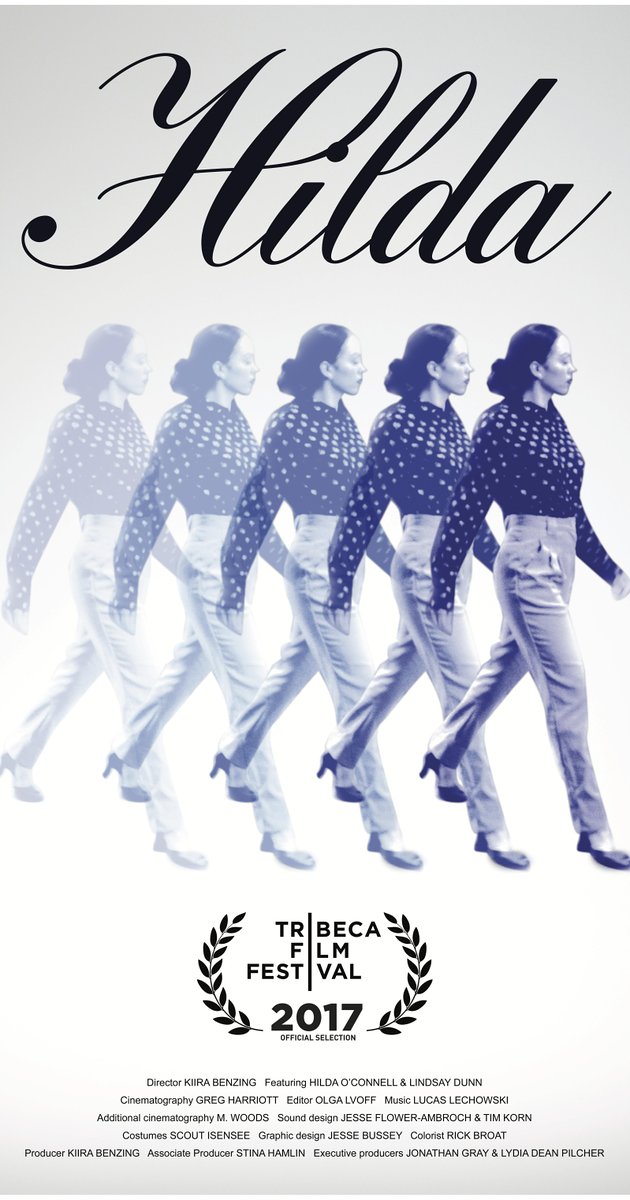Hilda O'Connell doesn't paint like an octogenarian. "She is tiny now and fragile and has been in and out of the hospital," says director Kiira Benzing, "but she still attacks that canvas." O'Connell, a member of the abstract expressionist movement and an active New York artist, is the subject of Benzing's rich documentary, Hilda, which premiered at this month's Tribeca Film Festival.Just like the dance and song that have so inspired O'Connell's work—she's a faithful fan of Fred Astaire—Hilda's lyrical story is broken up by a duet of visual refrains: B-rolll of the artist as she is now; reading, painting, and walking her faithful dog; and imaginative scenes reminiscent of the musicals of Astaire's era.
Advertisement
In between these soothing repetitions is the tale of a young artist in the 1950s, one of the very few women living and pursuing a painting career in the heart of the West Village, who made herself at home in the boys' club that was the abstract expressionist movement. From her studio on 10th Street, O'Connell rubbed elbows with the greats as she watched them paint, create, destroy, and party. "She told me one night she had gone out to wait tables or something," Benzing tells Creators, "and she came home to find de Kooning passed out in her bed."Benzing first met O'Connell while doing promotional film work for the Carter Burden Gallery for aging artists. "You have to be 50+ to get into the gallery," she explains, "which is such an interesting phenomenon because of course the art world loves a good, hot, young person." The gallery is funded by a nonprofit of the same name that feeds and gives health services to the elderly. Benzing, captivated by O'Connell's story as well as others', then asked for and was granted the right to use some of the film she had shot for the gallery for her own work.
In a way, the film that resulted from this work is somewhat of an outlier in Benzing's growing portfolio. It is a 2D film from a director who spends most of her time exploring the territory of three-dimensional space. "I started making VR in the last two years, so the fact that this film even got entered into Tribeca was totally on a whim," she says.
Advertisement
Despite its formal differences, however, Hilda is still very much in keeping with a preoccupation of the filmmaker that has dominated her work for even longer than VR. "I noticed this theme in my work when I was putting a director's portfolio together. I realized, 'Oh my gosh, the last two-and-a-half years I have been making films about artists in New York City and the lack of studio spaces in New York and gentrification and how all of that weaves together.'"Of course, making films with subjects from a different generation is not always smooth sailing. Benzing says that O'Connell sometimes didn't understand why she and her crew kept coming back for more and still more filming. "I was trying to explain, 'You know how you layer paint on the canvas. Or you take something down and put it on the shelf and then come back to look at it again to change something, or start over. A film is just like that.'"
Watching Hilda, however, you would never guess that O'Connell is anything other than a natural in front of the camera. She is the perfect subject for Benzing's Varda-inspired cinéma vérité.One scene in particular comes to mind: O'Connell and her friends (who are all around her age and are all creatives in their own rights) are gathered around a dining room table drinking wine and gossiping. They get up and move slowly into O'Connell's studio. Then, the conversation immediately turns to a thoughtful discussion of method and artistic evolution. O'Connell, the smallest and frailest looking for them all, considers her own work pridefully, though not without critique. She smiles.
Advertisement
"Hilda's artwork, what she's doing now," Benzing says, "I think is her strongest."Click here to learn more about Hilda.Related:Before Banksy and Basquiat, There Was ShadowmanHow an Unfinished James Baldwin Manuscript Became a Documentary FilmThe Future of Virtual Reality Smells Like Dirt
